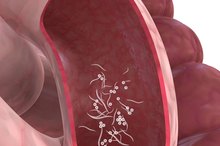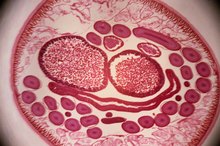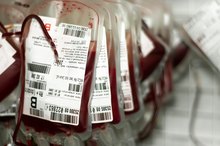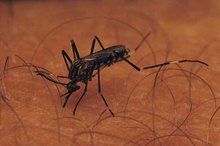Symptoms & Effects of Malaria
Malaria is an infectious disease caused by a parasite of the genus Plasmodium and transmitted by mosquitoes 2. According to the National Institute of Allergy and Infectious Diseases, four species of Plasmodium found in Africa and tropical and subtropical countries in Asia, South and Central America and the Middle East infect humans. Malaria causes recurrent symptoms, and its effects can be long-lasting or fatal in some cases 2.
If you are experiencing serious medical symptoms, seek emergency treatment immediately.
Common Symptoms
Malarial infections are characterized by paroxysms, or recurrent attacks, that develop in three stages, according to the National Institute of Allergy and Infectious Diseases (NIAID). The first stage of these attacks is the development of chills. Stage 2, fever, typically develops within an hour or two of initial symptoms and may cause hot and dry skin. These symptoms generally appear within ten to 16 days after the infectious mosquito bite and occur as a result of the bursting of infected red blood cells.
- Malarial infections are characterized by paroxysms, or recurrent attacks, that develop in three stages, according to the National Institute of Allergy and Infectious Diseases (NIAID).
- These symptoms generally appear within ten to 16 days after the infectious mosquito bite and occur as a result of the bursting of infected red blood cells.
Differentiating Symptoms
Side Effects of a Bedbug Bite
Learn More
According to the NIAID, the presentation of symptoms of malaria may differ depending upon the parasite that caused the infection 2. Plasmodium falciparum malaria often develops suddenly and is associated with the most severe complications 2. People with P. falciparum malaria may feel miserable between attacks and may die without treatment 2. On the other hand, those with Plasmodium vivax malaria, a geographically widespread type of malaria that produces less severe symptoms but that can recur for up to 3 years, may feel fine in between attacks 2. Plasmodium malariae infections can produce typical malaria symptoms, but the virus may lie dormant in the blood for decades, and even those with no symptoms can spread the infection through blood donation or mosquito bites 2. Plasmodium ovale infections are very rare (occurring mainly in West Africa) and may cause relapses. Both P. vivax and P. ovale infections are characterized by attacks that recur regularly every two days, while P. malariae is associated with recurrences occurring every three days.
Serious Effects
Infection with P. falciparum will most likely to lead to serious, potentially fatal complications. According to the Mayo Clinic, if left untreated, P. falciparum malaria can cause death within hours of infection 12. Hemolytic anemia, a condition in which the bone marrow is unable to keep up with the pace of red blood cell destruction caused by the infection, may lead to fatigue, weakness, pale skin, rapid heart rate, enlargement of the spleen and shortness of breath, according to the National Institutes of Health (NIH) 3.cause:
- Hemolytic anemia
- a condition in which the bone marrow is unable to keep up with the pace of red blood cell destruction caused by the infection
- may lead to fatigue
- weakness
- pale skin
- rapid heart rate
- enlargement of the spleen
- shortness of breath
- according to the National Institutes of Health (NIH) 3
Cerebral malaria may also occur if infected blood cells block the blood vessels to the brain 2. Cerebral malaria may lead to swelling of the brain and brain damage 2.
Related Articles
References
- NIAID: Malaria
- National Institutes of Health: Malaria
- Centers for Disease Control and Prevention. About Malaria
- World Health Organization. World malaria report 2018
- Malaria. Frequently Asked Questions (FAQs)
- Centers for Disease Control and Prevention. Malaria Transmission in the United States
- Medline Plus . "Mefloquine." Mar 15, 2016.
- Tan, Kathrine R, Magill, Alan J, Parise, Monica E, and Arguin, Paul M. "Doxycycline for Malaria Chemoprophylaxis and Treatment: Report from the CDC Expert Meeting on Malaria Chemoprophylaxis." Am J Trop Med Hyg. Par 5, 2011; 84(4): 517-531. DOI: 10.4269/ajtmh.2011.10-0285.
Writer Bio
Based in New York City, Tricia Mangan began her writing career in 2001. She has co-authored a National Cancer Institute report and a number of research articles that have appeared in medical journals. Tricia holds a Master of Arts in clinical psychology from Stony Brook University and boasts diverse clinical, research and teaching experience.








